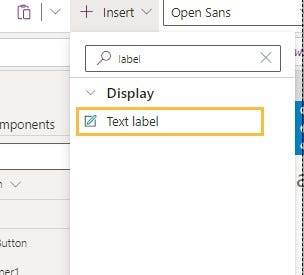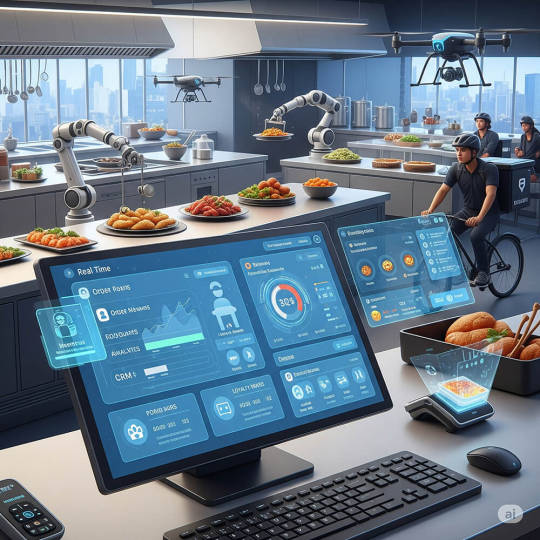#power platform developers
Explore tagged Tumblr posts
Text
Expert Power Platform Services | Navignite LLP

Looking to streamline your business processes with custom applications? With over 10 years of extensive experience, our agency specializes in delivering top-notch Power Apps services that transform the way you operate. We harness the full potential of the Microsoft Power Platform to create solutions that are tailored to your unique needs.
Our Services Include:
Custom Power Apps Development: Building bespoke applications to address your specific business challenges.
Workflow Automation with Power Automate: Enhancing efficiency through automated workflows and processes.
Integration with Microsoft Suite: Seamless connectivity with SharePoint, Dynamics 365, Power BI, and other Microsoft tools.
Third-Party Integrations: Expertise in integrating Xero, QuickBooks, MYOB, and other external systems.
Data Migration & Management: Secure and efficient data handling using tools like XRM Toolbox.
Maintenance & Support: Ongoing support to ensure your applications run smoothly and effectively.
Our decade-long experience includes working with technologies like Azure Functions, Custom Web Services, and SQL Server, ensuring that we deliver robust and scalable solutions.
Why Choose Us?
Proven Expertise: Over 10 years of experience in Microsoft Dynamics CRM and Power Platform.
Tailored Solutions: Customized services that align with your business goals.
Comprehensive Skill Set: Proficient in plugin development, workflow management, and client-side scripting.
Client-Centric Approach: Dedicated to improving your productivity and simplifying tasks.
Boost your productivity and drive innovation with our expert Power Apps solutions.
Contact us today to elevate your business to the next level!
#artificial intelligence#power platform#microsoft power apps#microsoft power platform#powerplatform#power platform developers#microsoft power platform developer#msft power platform#dynamics 365 platform
2 notes
·
View notes
Text
Trading Cloud Cost Chaos for FinOps Clarity with Azure + Power BI

Managing cloud costs can feel like solving a puzzle blindfolded. With multiple subscriptions, unpredictable usage, and scattered data, finance and tech teams often find themselves overwhelmed. That’s where Azure FinOps combined with Power BI dashboards steps in, offering a sharp, clean view of cloud spending—so you can stop guessing and start deciding.
What is Azure FinOps?
Azure FinOps refers to the application of financial operations (FinOps) principles specifically within the Microsoft Azure ecosystem. It helps organizations make informed cloud cost decisions by combining financial accountability with real-time data insights. The goal? To align cloud investment with business goals—without surprises when the monthly invoice arrives.
Power BI Dashboards: Your Visual CFO
Power BI brings Azure FinOps to life by transforming raw numbers into rich, interactive visuals. These dashboards highlight:
Spend by department or project
Resource usage over time
Forecasted vs actual budgets
Idle or over-provisioned resources
Finance, IT, and leadership teams can all view the same real-time data, but each through the lens most relevant to them.
Why Clarity Beats Chaos Every Time
Without proper visibility, cloud bills can balloon quickly. Overprovisioned VMs, storage that's never deleted, or spikes from unmonitored services—all these contribute to cost leaks. Azure cost management tools with FinOps practices bring structure. When paired with Power BI, every cost center becomes transparent.
Key Benefits at a Glance
Transparency: Know exactly where your money goes
Control: Set alerts, caps, and budgets before overspending happens
Accountability: Assign owners to cost centers for better governance
Optimization: Identify underused resources and eliminate waste
Collaboration: Tech, finance, and operations work off one source of truth
Real-Life Impact with VBeyond Digital
VBeyond Digital helps enterprises cut through the noise and gain total clarity on cloud costs. Their approach integrates Azure FinOps practices with custom Power BI dashboards, tailored to each business unit’s goals and KPIs. The result is smarter decisions, faster actions, and better returns from your Azure investments.
Check out their blog post for more insights on how this works: Trading Cloud Cost Chaos for FinOps Clarity with Azure + Power BI

Best Practices for Teams Adopting Azure FinOps
Set clear goals for cloud investment from day one
Centralize billing using Azure Cost Management
Regularly review dashboards—weekly or biweekly
Train teams to understand what cost signals mean
Use Power BI alerts for budget thresholds
Final Thought
Cloud expenses shouldn't be a mystery. With Azure FinOps and Power BI, companies finally gain the clarity and control needed to make data-driven financial decisions. VBeyond Digital brings all this together, ensuring cloud costs support growth—not hinder it.
FAQs
Q1. What is FinOps in Azure? FinOps in Azure is a practice that brings financial accountability to cloud spending, using tools like Azure Cost Management and Power BI.
Q2. How can Power BI help with cloud cost management? Power BI creates visual dashboards from Azure data, making it easier to understand and manage cloud expenses in real time.
Q3. Who should use Azure FinOps tools? Finance teams, IT leaders, and project managers all benefit from using FinOps practices and dashboards to control budgets and optimize usage.
Q4. What kind of data can be visualized in Power BI for Azure? Costs by subscription, department, service type, usage trends, and more can be tracked through custom dashboards.
Q5. Is this solution only for large enterprises? Not at all. Mid-sized companies and startups with growing cloud usage can also benefit from the clarity Azure FinOps provides.
#power bi integration#power bi consulting#power bi consulting services#power bi experts#power bi consultant#power bi services#power bi consultants#power bi integrations#power platform developers#azure data migration#azure data migration service#azure cloud migration#azure migration services#azure database migration service#data migration service azure#azure cloud migration services
0 notes
Text
#GTA:MagicKingdomDisney






Game Development Overview:
Title: GTA: The Magic Kingdom Platform: PlayStation 7 Developer: Rockstar Games in collaboration with DearDearestBrands Genre: Open-world Action/Adventure
Storyline:
In GTA: The Magic Kingdom, players explore a dark, reimagined version of Disney's iconic Magic Kingdom. The world is divided into themed lands, each with its own rules and factions. At its core, the story follows a criminal protagonist who is embroiled in a high-stakes battle for power and survival within the kingdom's chaotic, secretive underworld.
The protagonist (you) is a mysterious figure drawn into the Magic Kingdom's politics, where a sinister force is using the enchantment of Disney’s original lands for darker purposes. The hunt for Bambi, who is rumored to possess extraordinary powers tied to the kingdom’s survival, becomes a central pursuit, while the player navigates treacherous alliances, heists, and confrontations.
Main Character:

Name: Maximus Dark (or choose your own name) Backstory: A former magic thief, Maximus was exiled from the underworld for crossing a powerful figure. Now, forced to work in the Magic Kingdom's black market, he must hunt down Bambi and unlock secrets from deep within the kingdom's enchanted areas. Maximus has a personal vendetta against the kingdom’s rulers, who wronged him in his past. Throughout the game, the player will uncover the protagonist’s lost memories and long-forgotten connection to the forest kingdom that Bambi hails from.
Motivation: Maximus's primary goal is to reclaim his lost power, discover the truth behind Bambi’s existence, and stop a powerful corporation that seeks to rewrite the very essence of the Magic Kingdom. As the story unfolds, Maximus will face moral dilemmas, where every choice shapes the fate of the kingdom and his own soul.
Supporting Characters:

Bambi - The elusive and powerful figure whose very presence is tied to the survival of the kingdom. Bambi is the key to restoring balance but is hunted by those who wish to harness their power for dark purposes. They are often seen as a mystical being, guiding the protagonist toward their true destiny.
Claire Jorif Valentine – An enigmatic leader of a rebel faction, Claire operates in the shadows, challenging the corrupt rulers of the kingdom. She provides Maximus with missions, allies, and sometimes betrays him to further her hidden agenda. A powerful figure in the underworld, she seems to know more about Bambi than she lets on.
The Enchanted Guardians – These figures protect each themed land within the Magic Kingdom. They could either be allies or enemies depending on how the player approaches them. The Guardians are immortal beings who represent the natural forces of the kingdom—ranging from corrupted versions of iconic Disney characters like Captain Hook, Maleficent, or the Queen of Hearts.
Tiger Lily – A key ally who once helped Bambi and holds secrets to unlocking the magical energies in the kingdom. She is on a quest to stop the dark forces from taking over the kingdom. As a supporting character, she aids in quests related to nature and magic and can unlock special abilities for the player.
Walt - A mysterious figure who seems to control the Magic Kingdom’s darkest secrets. He appears to have been a creator of both the magic and the corruption that now threatens the lands. Maximus will need to confront him as the story builds toward the final confrontation.
Gameplay:
Open-World Exploration: The game world is split into different magical lands, such as Adventureland, Fantasyland, Tomorrowland, and others. Each land offers unique challenges, missions, and enemies. Players can freely explore these areas and engage in side missions while unraveling the main story.
Combat: Players can engage in both ranged and hand-to-hand combat, using magical powers, enchanted weapons, and advanced technology. The combat system is dynamic, blending traditional open-world combat with the ability to wield magic and technology.
Heist Missions: As Maximus tries to gain control of the Magic Kingdom, he must undertake heists to infiltrate high-security areas and steal vital items—such as keys to unlock magical areas or magical artifacts that help in the hunt for Bambi.
Choices & Morality: The game emphasizes player choices, with the narrative changing based on decisions. Will Maximus become a hero, villain, or something in-between? The relationship with Bambi and other characters is crucial, as decisions affect both alliances and the kingdom’s fate.
Stealth and Deception: Players can also use stealth to infiltrate the kingdom’s high-security areas or employ deception to manipulate enemies. Using disguises, magic, and technology, Maximus can change the course of battles or avoid them altogether.
Motivation of Player:
The player is constantly driven by the need for power, knowledge, and redemption. They must build their empire, uncover the dark secrets of the kingdom, and forge relationships with various characters—each with their own agendas. However, the hunt for Bambi represents more than just a physical chase; it's a quest for deeper understanding, as Bambi’s powers could either save or doom the Magic Kingdom.
Key Objectives:
Locate Bambi: The primary objective is to find Bambi before the forces of darkness do. Along the way, players uncover the mysteries of the forest kingdom and its connection to the greater magical world.
Restore the Kingdom: Players must gather allies, defeat corrupt leaders, and unlock ancient powers to restore balance to the kingdom. Each land requires the completion of key quests, often involving battles, negotiations, and solving puzzles.
Uncover Maximus’s Past: As Maximus’s memories return, the player will unlock hidden abilities and unique storylines. The past is filled with betrayal and secrets that will help guide the future of the kingdom.
End the Corruption: Maximus must dismantle the oppressive corporation that seeks to control the kingdom's magical energy. This requires sabotaging their operations, stealing key documents, and confronting their leaders in epic battles.
The Final Confrontation: In the game's climax, the player must decide whether to join Bambi in their fight for freedom or betray them to seize ultimate power. The fate of the Magic Kingdom—and possibly the world—rests in the player’s hands.
This game blends classic open-world gameplay with dark fantasy elements and a rich narrative, providing players with the chance to explore a re-imagined Disney universe full of intrigue, magic, and moral complexity. The pursuit of Bambi adds layers of mystery and suspense, making this a truly unique entry in the GTA franchise.








To project the potential success of GTA: The Magic Kingdom in 2025, we need to consider various factors including market trends, audience engagement, and the unique elements of the game. Here's a breakdown:
Market Growth for Open-World and Action-Adventure Games:
Current Trends: The gaming industry, especially for open-world games and action-adventure genres, has shown steady growth. Titles like Grand Theft Auto V, The Witcher 3, and Cyberpunk 2077 continue to drive demand for expansive worlds with immersive stories.
Projections: The global gaming market is expected to grow at a compound annual growth rate (CAGR) of around 9.5% from 2024 to 2028. As GTA: The Magic Kingdom combines elements of beloved franchises (GTA and Disney), it could tap into both established fanbases, providing a unique mix of nostalgia and innovation.
Audience Engagement and Sentiment:
Nostalgia Factor: The reimagining of Disney’s Magic Kingdom with dark and mature themes will likely engage both nostalgic fans of Disney and mature audiences looking for an alternative take on Disney. This could boost both initial sales and long-term engagement.
Fanbase Growth: By 2025, your fanbase could grow significantly as the game's story unfolds. Assuming solid marketing campaigns and collaborations with influencers or streamers, you might see a steady increase in followers and engagement leading up to and after the game’s release.
Projections: Positive sentiment is expected if the game's unique blending of fantasy, technology, and dystopian elements resonates with audiences. Projections for engagement could range from a 15-20% increase in social media mentions in the first year after release.
Technological Advances and Game Development:
PlayStation 7 and Future Hardware: Given the expected launch of PlayStation 7 around 2025, GTA: The Magic Kingdom could be designed to take full advantage of next-gen console power. This will allow for an even more immersive experience with advanced graphics, smoother gameplay, and expansive worlds.
Projections: With the integration of next-gen technologies (such as AI-driven NPCs and advanced virtual reality options), GTA: The Magic Kingdom could have a 30-40% higher player retention rate due to these enhanced features.
Sales Projections:
Market Demand: Based on trends for similar games (open-world, fantasy, and action-adventure), initial sales could range between 5-10 million copies within the first year.
Projections for 2025: The game could potentially reach 15-20 million copies sold by 2025, depending on post-launch expansions, updates, and downloadable content (DLC). A strong, loyal fanbase built from the early adoption of the game could help push this figure higher.
Expansion and Future Growth:
DLCs & Expansions: By 2025, the game could see its first major expansion, adding new zones, characters, and stories to keep players engaged.
Projections: Expansions or sequels could drive continued engagement. This could result in an additional 10-20% increase in sales in the second year post-launch, especially if the game incorporates user feedback and evolves based on community input.
Marketing and Brand Partnerships:
Brand Alignment: With ties to Disney, GTA: The Magic Kingdom could attract partnerships, cross-promotions, and collaborations with major brands.
Projections: These collaborations could increase visibility, leading to higher-than-expected sales and engagement. With a proper marketing push and potentially viral content, the game's overall reach could expand significantly, especially if there are partnerships with influencers or Disney-themed events.
Summary of Projections for 2025:
Sales: 15-20 million copies sold globally
Player Engagement: 30-40% higher retention with the introduction of new technology
Audience Growth: Significant increase in fanbase with positive sentiment and engagement, likely 20-25% growth year-over-year
Brand Partnerships and DLCs: Increased revenue from post-launch content and collaborations
Overall, with the unique blend of popular genres and the anticipated growth of gaming markets, GTA: The Magic Kingdom could be positioned for strong performance by 2025, with significant growth in both sales and player engagement.
#Game Development Overview:#Title: GTA: The Magic Kingdom#Platform: PlayStation 7#Developer: Rockstar Games in collaboration with DearDearestBrands#Genre: Open-world Action/Adventure#---#Storyline:#In GTA: The Magic Kingdom#players explore a dark#reimagined version of Disney's iconic Magic Kingdom. The world is divided into themed lands#each with its own rules and factions. At its core#the story follows a criminal protagonist who is embroiled in a high-stakes battle for power and survival within the kingdom's chaotic#secretive underworld.#The protagonist (you) is a mysterious figure drawn into the Magic Kingdom's politics#where a sinister force is using the enchantment of Disney’s original lands for darker purposes. The hunt for Bambi#who is rumored to possess extraordinary powers tied to the kingdom’s survival#becomes a central pursuit#while the player navigates treacherous alliances#heists#and confrontations.#Main Character:#Name: Maximus Dark (or choose your own name)#Backstory: A former magic thief#Maximus was exiled from the underworld for crossing a powerful figure. Now#forced to work in the Magic Kingdom's black market#he must hunt down Bambi and unlock secrets from deep within the kingdom's enchanted areas. Maximus has a personal vendetta against the king#who wronged him in his past. Throughout the game#the player will uncover the protagonist’s lost memories and long-forgotten connection to the forest kingdom that Bambi hails from.#Motivation: Maximus's primary goal is to reclaim his lost power#discover the truth behind Bambi’s existence
10 notes
·
View notes
Text
Generative AI Solutions Architect
Job title: Generative AI Solutions Architect Company: EXL Service Job description: to be essential for the role: Programming & Libraries: Deep proficiency in Python and extensive experience with relevant AI/ML/NLP… experience in technology consulting or a client-facing technical specialist role within a technology provider is highly… Expected salary: Location: United Kingdom Job date: Wed, 28 May…
#Aerospace#Android#audio-dsp#Automotive#cloud-native#computer-vision#Crypto#data-engineering#dotnet#erp#ethical-hacking#full-stack#iot#it-consulting#it-support#low-code#metaverse#mlops#mobile-development#NLP Specialist#power-platform#prompt-engineering#robotics#scrum#site-reliability#SoC#telecoms#visa-sponsorship#vr-ar
2 notes
·
View notes
Text
I don't fucking WANT your stupid fucking AI "search with microsoft copilot" FUCK OFF "can our AI chatbot help you?" DIE "learn language with AI!" NO "code with copilot" YOU WILL NOT FUCKING TOUCH MY CODE YOU PIECE OF METALLIC SHIT. MY CODE IS ART THAT WILL NOT BE FUCKING DEFILED BY A SOULLESS CORPORATION PUPPET
#fuck generative ai#I opened github and the first message is “world's largest ai powered development platform”#code was meant to be CREATED#javascript bros have ruined it already#and ai bros are already actively ruining it#the whole vibe coding idiocy is going to be a goldmine for infosec tho#ik copilot has existed for a while but I am sick of ai being shoved down everywhere#the other day I was trying to find smth on pinterest and I swear to god 90% of shit there is ai shit now
3 notes
·
View notes
Text
Simplify Transactions and Boost Efficiency with Our Cash Collection Application
Manual cash collection can lead to inefficiencies and increased risks for businesses. Our cash collection application provides a streamlined solution, tailored to support all business sizes in managing cash effortlessly. Key features include automated invoicing, multi-channel payment options, and comprehensive analytics, all of which simplify the payment process and enhance transparency. The application is designed with a focus on usability and security, ensuring that every transaction is traceable and error-free. With real-time insights and customizable settings, you can adapt the application to align with your business needs. Its robust reporting functions give you a bird’s eye view of financial performance, helping you make data-driven decisions. Move beyond traditional, error-prone cash handling methods and step into the future with a digital approach. With our cash collection application, optimize cash flow and enjoy better financial control at every level of your organization.
#seo agency#seo company#seo marketing#digital marketing#seo services#azure cloud services#amazon web services#ai powered application#android app development#augmented reality solutions#augmented reality in education#augmented reality (ar)#augmented reality agency#augmented reality development services#cash collection application#cloud security services#iot applications#iot#iotsolutions#iot development services#iot platform#digitaltransformation#innovation#techinnovation#iot app development services#large language model services#artificial intelligence#llm#generative ai#ai
4 notes
·
View notes
Text
Count The Rows In A Power Apps Gallery With AllItemsCount
Overview:
In this blog post, we’ll explore how to count Power Apps Gallery Rows using the AllItemsCount property. We’ll insert a label to show the count of all gallery items and then implement the exact code for precise counting. Each step comes with images and clear instructions. By the end, you’ll master the display of the total number of items in any gallery. Let’s dive in!


This code we use and count how many items in gallery
Read Full Post here: How to Count Rows in Power Apps Gallery: A Step-by-Step Guide (softwarezone365.com)
View Post On: LinkedIn: (4) Software Zone 365: Company Page Admin | LinkedIn Twitter: https://twitter.com/365_zone40741/status/1712883279580614768 Medium: Microsoft’s Power Platform Potential: Unlocking Business Impact (softwarezone365.com) Pinterest: https://www.pinterest.com/pin/1065875436793645010 Reddit: https://www.reddit.com/user/SoftwareZone365/comments/1773k2e/count_the_rows_in_a_power_apps_gallery_with/ Quora: https://www.quora.com/profile/Software-Zone-365/In-this-blog-post-we-ll-explore-how-to-count-Power-Apps-Gallery-Rows-using-the-AllItemsCount-property-We-ll-insert-a-l GitHub: Count The Rows In A Power Apps Gallery With AllItemsCount · softwarezone365/PowerApps Wiki (github.com) Instagram: https://www.instagram.com/p/CyWOuK8sGc9/ Facebook: https://m.facebook.com/story.php?story_fbid=300738072723966&id=100083633251137&mibextid=ZbWKwL
#development#AllItemsCount#App Development#BrowseGallery1#Coding in Power Apps#Gallery Items#Gallery Management#Gallery Rows#Item Counting#Label Count#Microsoft Power Apps#Power Apps#Power Apps Functions#Power Apps Gallery#Power Apps Tips#Power Apps Tutorial#Power platform#Row Counting Technique#Step-by-Step Guide#Text Property
2 notes
·
View notes
Text
Jaipur’s startup scene is thriving, and fresh graduates are in demand. This Salarite blog dives deep into the sectors hiring, expected salaries, job roles, and required skills for startup jobs in Jaipur. If you're a fresher seeking real responsibility, quick learning, and growth potential, these job insights will help you find the best fit in Jaipur’s 2025 startup job market.
#salarite#startup jobs in jaipur#power bi jobs in jaipur#web developer jobs in jaipur#data analytics jobs in jaipur#free job alerts for employers#jaipur startup jobs#sales manager jobs in jaipur#candidate screening#candidate screening services#candidate sourcing platforms
0 notes
Text
How AI-Powered Finance Platforms Are Transforming the Industry
Through cutting-edge FinTech platforms, artificial intelligence (AI) is transforming the financial sector and spurring innovation. By integrating machine learning, predictive analytics, and natural language processing, AI-powered finance platforms are enhancing efficiency, security, and user experience. With the FinTech sector projected to grow by 40% by 2030, these platforms are reshaping how businesses and consumers interact with financial services. Here’s how AI is transforming the industry and why partnering with a FinTech app development company is essential for staying competitive.
Streamlining Financial Operations
AI-powered platforms automate complex processes, reducing costs and improving efficiency. For instance, AI-driven microfinance platforms use quick loan approval systems to assess creditworthiness in seconds, enabling faster loan disbursals. Similarly, AI chatbots provide 24/7 customer support, guiding users through applications and repayments. These advancements enhance operational efficiency, allowing businesses to scale rapidly while meeting user demands for speed and convenience.
Enhancing User Experience
Personalization is a cornerstone of AI-powered FinTech platforms. By analyzing user data, AI delivers tailored recommendations, such as customized investment strategies on advisory portfolio management systems. Features like predictive market analysis and stock-specific reports empower users to make informed decisions. With 75% of users prioritizing convenience, AI ensures finance platforms are intuitive and user-friendly, boosting engagement and satisfaction.
Strengthening Security and Compliance
Security is paramount in finance, and AI strengthens it through robust encryption, two-factor authentication (2FA), and fraud detection algorithms. AI-powered systems ensure data privacy and foster user confidence by adhering to laws like GDPR and PCI DSS. For example, peer-to-peer (P2P) lending platforms use AI for background verification and intelligent matchmaking, creating transparent and secure connections between borrowers and investors.
Driving Financial Inclusion
AI-powered platforms are expanding access to financial services, particularly in underserved communities. Microfinance solutions leverage AI to offer scalable, secure loan management, empowering individuals with limited access to traditional banking. Crowdfunding platforms, enhanced by AI-driven search and discovery, connect innovative projects with investors, fostering economic growth and opportunity.
The Future of AI in Finance
FinTech's future depends on AI's ongoing development. Emerging technologies like generative AI and blockchain integration will further enhance platform capabilities, offering greater personalization and security. To stay ahead, businesses must adopt AI-driven solutions that align with evolving consumer expectations and regulatory standards.
Partner with Experts for Success
Building an AI-powered finance platform requires expertise and innovation. A trusted FinTech app development company can deliver secure, scalable, and customized solutions tailored to your business goals. From stock trading systems to crowdfunding platforms, these experts leverage cutting-edge technologies to drive financial innovation.
Ready to transform your financial services? Contact a FinTech app development company today to build an AI-powered platform that revolutionizes your industry presence.
0 notes
Text
Power Platform Offshore Development Services to Build Smarter, Faster Solutions
Need extra hands to build apps or automate tasks on Microsoft’s Power Platform? Our Power Platform offshore development services offer you a skilled team that works just like your in-house developers—but at a lower cost. Whether it’s Power Apps, Power Automate, or Power BI, we help turn your ideas into working solutions. You can scale your team quickly, save time, and focus on what matters while we handle the heavy lifting. We follow your timeline, deliver quality work, and bring deep expertise in Microsoft technologies. If you're looking to grow fast with less stress, our Power Platform offshore development services are the way to go.
0 notes
Text
Why AI-Powered ITSM Platform Development Is the Future of Intelligent IT Operations in 2025 and Beyond
In an era where every second of downtime can cost enterprises millions, the evolution of IT Service Management (ITSM) is not just a luxury—it’s a necessity. As organizations shift toward digital-first strategies and demand agility, responsiveness, and predictive capabilities, traditional ITSM tools no longer suffice. Enter AI-powered ITSM platform development, a transformative leap that is redefining intelligent IT operations in 2025 and setting the course for the decade ahead.
From proactive incident prevention to intelligent automation, AI-enhanced ITSM is rapidly becoming the bedrock of future-proof enterprise operations. But what exactly makes it the cornerstone of modern IT strategies?

1. The Changing IT Landscape in 2025
The IT ecosystem in 2025 looks radically different than it did a decade ago:
Multi-cloud and hybrid environments are the norm.
Remote and distributed workforces demand seamless digital experiences.
Cybersecurity threats are more sophisticated.
Data volumes are growing exponentially.
SLAs and customer expectations have reached new highs.
This level of complexity has rendered manual ticketing systems and reactive support models obsolete. Enterprises now require autonomous, AI-driven solutions capable of self-healing, self-learning, and proactive decision-making.
2. What Is an AI-Powered ITSM Platform?
An AI-powered ITSM platform leverages artificial intelligence, machine learning (ML), natural language processing (NLP), and predictive analytics to optimize and automate IT service management processes. These platforms move beyond traditional ticketing and workflow systems to deliver smart, contextual, and real-time operations.
Key Features:
Intelligent Incident Management: Automatically categorize, prioritize, and route tickets.
Predictive Analytics: Anticipate outages and resolve issues before they escalate.
Virtual Agents and Chatbots: Provide 24/7 support with conversational AI.
Smart Knowledge Management: Recommend relevant solutions from vast data repositories.
Process Automation: Automate repetitive and rule-based tasks across IT functions.
3. Why AI-Powered ITSM Is Essential in 2025 and Beyond
A. Proactive IT Support
AI can predict incidents based on trends, user behavior, and historical data. Instead of reacting to issues, IT teams can prevent them, dramatically reducing downtime and improving operational continuity.
💡 Example: A global telecom company using an AI-powered ITSM detected CPU spikes 6 hours before a server outage, triggering preventive measures that avoided service disruption.
B. Faster Incident Resolution
AI enables automated triaging, intelligent ticket routing, and instant remediation suggestions. This reduces Mean Time to Resolution (MTTR) and boosts user satisfaction.
📊 Impact: According to a Gartner study, AI-driven ITSM can reduce resolution times by up to 70%.
C. Reduced IT Costs
By automating Tier-1 support and repetitive tasks, AI reduces dependency on human resources for low-value tasks. This allows skilled professionals to focus on strategic initiatives.
💸 ROI Insight: Companies implementing AI-based ITSM reported up to 40% savings in service desk operations.
D. Improved User Experience
Modern employees expect instant, personalized service—mirroring their consumer experiences. AI chatbots and self-service portals powered by NLP deliver 24/7 contextual support, increasing user satisfaction scores.
E. Smarter Change and Asset Management
AI identifies potential risks before implementing changes and predicts asset failures or upgrades, making change management and asset lifecycle decisions smarter and data-driven.
4. Use Cases Redefining IT Operations with AI-Powered ITSM
1. Intelligent Virtual Agents (IVA)
AI bots resolve up to 80% of repetitive user queries, freeing up IT staff and improving response times. These bots also learn continuously from new issues.
2. Root Cause Analysis (RCA) with Machine Learning
AI can analyze logs, correlate events, and pinpoint the root cause of recurring incidents, eliminating the need for reactive fire-fighting.
3. Capacity Planning
ML models forecast system loads based on usage patterns, helping IT teams make informed infrastructure investments and avoid performance bottlenecks.
4. Sentiment Analysis for User Feedback
NLP tools analyze ticket descriptions and feedback to gauge user sentiment, helping ITSM teams fine-tune services and communication.
5. Technologies Fueling AI-Powered ITSM Development
To deliver intelligent automation at scale, AI-powered ITSM platforms in 2025 integrate a robust tech stack: TechnologyRoleMachine Learning (ML)Learns from historical data to predict incidents and recommend actionsNatural Language Processing (NLP)Enables conversational interfaces and understands unstructured dataRobotic Process Automation (RPA)Executes rule-based tasks without human interventionPredictive AnalyticsForecasts issues, resource needs, and performance degradationCloud-Native MicroservicesEnsures scalability, flexibility, and rapid deployment of ITSM componentsGenerative AIDynamically creates KB articles, responses, and IT documentation
6. Benefits of Building a Custom AI-Powered ITSM Platform
While many off-the-shelf ITSM tools offer AI features, custom development unlocks deeper personalization, integration, and competitive advantage:
Tailored Automation for unique workflows
Integrations with legacy and modern systems
Data privacy and governance aligned with enterprise policies
Modular scalability as your IT landscape evolves
Competitive differentiation in service delivery speed and quality
7. Industry Leaders Driving AI-Driven ITSM in 2025
Several global enterprises have already set benchmarks in AI-driven IT operations:
ServiceNow: Their AI capabilities for proactive service operations are now foundational to global IT support teams.
BMC Helix: Known for AIOps integrations and hybrid-cloud management.
Freshservice: Offers AI-powered bots and sentiment analysis for SMBs.
IBM Watson AIOps: Integrates with ITSM platforms for deep observability and automation.
8. Challenges to Consider in AI-Powered ITSM Development
Despite its promise, AI-powered ITSM development comes with challenges that must be addressed for success: ChallengeStrategyData SilosInvest in data integration layers and API connectorsBias in AI ModelsEnsure training data diversity and regular auditsChange ResistanceConduct stakeholder training and gradual rolloutsComplexity in DeploymentAdopt modular architecture and agile development
9. The Future Outlook: What’s Next for AI-Powered ITSM?
By 2030, we’re likely to see:
Autonomous ITSM: Platforms that automatically detect, diagnose, and resolve issues end-to-end.
AI copilots for IT agents: Generative AI assistants that guide support agents in real time.
Hyper-personalized self-service: AI tailoring experiences based on user behavior and device history.
AI and AIOps fusion: Real-time observability combined with ITSM to deliver predictive, context-aware support.
Final Thoughts: The Inevitable Shift to Intelligent ITSM
In 2025 and beyond, organizations that embrace AI-Powered ITSM Platform Development will unlock superior operational efficiency, enhanced user satisfaction, and agile incident response. The development of intelligent, customizable ITSM platforms will no longer be optional—it will be foundational to digital resilience and competitiveness.
The real value of AI in ITSM isn’t just in automation; it’s in creating an intelligent nervous system that empowers enterprises to predict, prevent, and personalize every aspect of their IT operations.
0 notes
Text
Boost Business Efficiency: Hire Power Automate Experts from ProsperaSoft
Looking to streamline operations and eliminate manual tasks? Hire certified Power Automate experts from ProsperaSoft to design and deploy tailored automation workflows that drive real results.
With deep expertise in the Microsoft Power Platform, Prospera’s team has successfully delivered over 100 automation solutions for 50+ clients across industries. Whether you need process automation, data integration, or AI-powered workflows, we’ve got the tools and talent to elevate your business.
Why Choose Our Power Automate Developers?
Custom workflows for approvals, data handling & system integration
Seamless app connectivity with real-time notifications
Scalable solutions with AI & bot automation
End-to-end support from planning to deployment
Let our experts help you automate smarter. Improve accuracy, reduce manual effort, and enhance productivity—one workflow at a time.
0 notes
Text
Power BI For Mac: Everything You Need to Know
Data analytics plays an indispensable role in modern decision-making, offering businesses the tools to interpret complex datasets and drive actionable insights. Among the top platforms in this domain is Power BI, a solution by Microsoft that empowers organizations to craft detailed reports, interactive dashboards, and sophisticated analytics workflows. Its ability to connect to diverse data sources and provide real-time updates has made it a cornerstone for many enterprises seeking efficiency and accuracy in their reporting processes.
However, the question often arises: How can this powerful tool be accessed effectively on a MacOS device such as iMac or MacBook? With an increasing number of organizations incorporating macOS into their infrastructure, the absence of a native application of Power BI Desktop for Mac has led to innovative workarounds. These methods bridge the gap between user expectations and technical constraints, ensuring that businesses continue to benefit from Power BI capabilities regardless of their operating system preference.
This blog covers practical solutions available for Mac users. Additionally, it explores the methods, challenges, and potential advancements shaping the future of Power BI, making it a critical read for executives, data professionals, and IT teams seeking reliable solutions for cross-platform analytics.
With the growing adoption of macOS in corporate environments, the demand for Power BI Desktop for Mac has increased significantly. Although Microsoft has not yet developed a native application for macOS, the functionalities of Power BI can be accessed via virtual environments, web services, or cross-platform integrations.
How to use Power BI on MacBook?
While Power BI is traditionally built for Windows, modern business environments have seen increasing demand for cross-platform compatibility. For organizations and executives who prefer macOS, the ability to run Power BI for Mac effectively bridges the gap between operational needs and technological preference. Although a native Power BI Desktop for Mac application does not exist, there are multiple approaches to access its functionality on macOS.
Feature Limitations in Browser-Based Power BI
While the browser-based Power BI service provides a convenient alternative for Mac users, it does not replicate the full functionality of the desktop version. Executives who rely on advanced features like custom DAX calculations, intricate data modeling, or template-based reporting may find the browser solution inadequate.
Feature Gaps:
Data Modeling: Advanced data shaping and transformation tools are absent in the web version.
Limited Offline Access: The Power BI service requires continuous internet connectivity, limiting its utility in offline scenarios.
Customization Constraints: Creating complex dashboards and visuals is more cumbersome compared to the desktop environment.
Power BI service for Mac
Microsoft’s Power BI service, a browser-based solution, allows Mac users to access many features of the platform without additional installations. Through this service, executives and analysts can create, view, and share interactive dashboards and reports via supported browsers like Safari or Chrome. This approach maintains efficiency, especially for collaborative environments, as it supports real-time updates, role-based access, and report publishing.
While the Power BI service offers many advantages, it does not entirely replace Power BI Desktop. Advanced users who rely on complex data modeling and custom calculations may find the browser-based tool insufficient. However, for executives primarily focused on reviewing dashboards and KPIs, this solution is both practical and effective.
Workarounds for Power BI Desktop on Mac
Several workarounds allow Power BI Desktop to function on macOS, enabling businesses to retain the full spectrum of Power BI capabilities:
Boot Camp Assistant: By partitioning a Mac’s storage, Boot Camp Assistant allows users to install Windows alongside macOS. This enables full native access to Power BI Desktop without performance compromise. The method is ideal for professionals requiring all features of the software, but it is limited to Intel-based Macs. Executives relying on Apple’s M1 or M2 architecture will need alternative solutions.
Virtual Machines (VMs): Virtualization tools like Parallels Desktop or VMware Fusion create an isolated Windows environment within macOS. This method enables Power BI for MacBook users to install and operate Power BI Desktop, even on newer M1/M2 chipsets. Although resource-intensive, VMs provide flexibility and allow simultaneous access to both macOS and Windows-based tools.
Remote Desktop Access: With a remote desktop setup, executives can access a Windows machine running Power BI Desktop from their Mac. Tools like Microsoft Remote Desktop offer secure connectivity, making this an efficient option for those with dedicated IT resources. This method is particularly useful for organizations with centralized reporting infrastructure.
Key Considerations for Mac Users
Hardware Requirements: Running Power BI Desktop on a Mac through virtualization or Boot Camp demands sufficient memory and processing power. High-capacity configurations are recommended for optimal performance.
Cloud-Based Connectivity: Many organizations adopt Power BI service for distributed teams. The ability to access reports in real-time without relying on local installation makes it appealing for executives managing global operations.
Resource Allocation: VMs and remote access methods require robust IT support. Proper configuration and maintenance are essential to avoid downtime or data bottlenecks.
#power bi integration#power bi consulting#power bi consulting services#power bi experts#power bi consultant#power bi services#power bi consultants#power bi integrations#power platform developers
0 notes
Text
The Future of Food Delivery Apps: Why POS & CRM Integration Is the Ultimate Growth Catalyst in 2025

The aroma of opportunity is stronger than ever in the U.S. food delivery sector as we cruise through 2025, yet so is the intensity of competition. What began as a simple grab-and-go convenience has rapidly evolved into a sophisticated, consumer-driven experience. For any forward-thinking food delivery app development company, merely connecting diners with local eateries is no longer a path to sustainable success. The strategic bedrock for navigating this dynamic landscape and truly catalyzing app development for food business growth lies in one powerful synergy: the seamless integration of Point-of-Sale (POS) and Customer Relationship Management (CRM) systems.
This isn't just about a new tech trend; it's a fundamental shift in how restaurants and delivery platforms operate, interact with customers, and ultimately thrive. In a market where options abound, the true differentiator isn't just what you deliver, but how intelligently you understand, serve, and retain your patrons. This deep dive will explore why POS + CRM integration is poised to be the ultimate growth catalyst for on demand food delivery app development and why embracing it is non-negotiable for any business aiming to lead in this competitive space.
The 2025 Landscape: Beyond the Basic Order
The American consumer in 2025 is digitally fluent and exceptionally discerning. They expect more than just a convenient transaction; they demand a personalized, transparent, and effortlessly smooth experience from start to finish. This translates into key expectations for food delivery:
Hyper-Personalization: Generic offers are ignored. "Welcome back, Sarah!" alongside tailored recommendations is the new standard.
Real-Time Transparency: Customers want to know precisely when their meal will arrive, with granular tracking from kitchen to doorstep.
Seamless Problem Resolution: If an issue arises, they expect swift, empathetic support with minimal hassle.
Value-Driven Loyalty: Loyalty programs should genuinely reward their consistent patronage with perks that feel personal and valuable.
For restaurants and the platforms that facilitate their deliveries, meeting these rising expectations while maintaining profitability is a constant balancing act. Relying on fragmented systems—a POS for in-house orders, a separate tablet for online delivery platforms, and disconnected customer databases—creates significant data silos. These silos lead to operational inefficiencies, costly errors, and, most critically, a disjointed customer experience. This highlights the urgent need for comprehensive food delivery app development services that prioritize true integration.
Deconstructing the Catalyst: What POS & CRM Bring to the Table
Before we delve into the transformative power of their integration, let's briefly revisit the core functions of these two essential systems:
The POS (Point of Sale): Your Operational Command Center. Far beyond a simple cash register, a modern POS is the central nervous system of a restaurant. It manages sales transactions, processes orders (whether dine-in, takeout, or delivery), tracks inventory, handles menu updates, adjusts pricing, and often integrates directly with kitchen display systems (KDS) to streamline food preparation. It’s about ensuring smooth, accurate fulfillment.
The CRM (Customer Relationship Management): Your Customer Intelligence Hub. This system is singularly focused on understanding, engaging, and nurturing customer relationships. It collects vital customer data, tracks interactions across all touchpoints, logs preferences, manages feedback, and facilitates personalized communication campaigns. It's designed to build loyalty and drive repeat business.
Individually, these are powerful tools. But the real magic, the true "catalyst for growth" for any food delivery app development company, emerges when these two systems become one cohesive, intelligent entity. This integration means that every sale, every customer interaction, every menu item, and every piece of feedback flows into a single, centralized database. This unified "single source of truth" empowers intelligent decision-making and fosters unparalleled personalization.
The Unstoppable Synergy: How Integration Drives Growth
The benefits of integrating POS and CRM permeate every layer of the food delivery ecosystem, from back-of-house operations to the customer’s doorstep, profoundly impacting every food delivery application development strategy.
A. Operational Mastery: The Engine of Efficiency and Accuracy
The immediate and tangible impact of POS + CRM integration is felt in streamlined operations and significantly reduced friction.
Real-time Order Synchronization: Imagine a customer in San Francisco placing an order via your on demand food delivery app development solution. With deep integration, that order doesn't just appear on a separate tablet. It's instantly routed to the restaurant's integrated POS system, flowing directly to the Kitchen Display System (KDS). This eliminates manual data entry errors, drastically accelerates food preparation, and ensures order accuracy, leading to faster delivery times and a superior customer experience.
Dynamic Inventory & Menu Management: Is that popular seasonal dish out of stock? Did a new special just launch? An integrated system ensures that any change made in the POS (e.g., an item going out of stock, a price adjustment, or a new promotional combo) is immediately reflected across all platforms, including your food delivery application development. This proactive management prevents frustrating order cancellations due to unavailability, minimizes food waste, and optimizes ingredient purchasing, which is critical for custom food delivery software solutions aimed at boosting profitability.
Optimized Logistics & Dispatch: By combining real-time order data from the POS with customer location and historical delivery data from the CRM, integrated systems can dynamically optimize delivery routes, efficiently assign drivers, and provide precise estimated delivery times. For businesses operating their own delivery fleet, this translates into significant savings on fuel and labor costs, enhancing the overall efficiency of their food delivery app development services.
Unified Reporting & Analytics: No more piecing together disparate spreadsheets. All sales data—whether from dine-in, takeout, or app delivery—is consolidated into a single, comprehensive dashboard. This provides a holistic view of business performance, allowing for granular analysis of peak hours, top-selling items across channels, average order values, and revenue breakdowns. Such insights are invaluable for strategic menu engineering, optimized staffing, and identifying new avenues for growth.
B. Hyper-Personalization: The Heart of Customer Loyalty
This is where the CRM truly leverages the POS data to craft compelling, personalized customer experiences—the cornerstone of modern food delivery app development.
The 360-Degree Customer Profile: Every interaction, every order, every preference, every complaint—it’s all in one centralized profile. This comprehensive view allows your app to truly "know" the customer. Did Sarah prefer vegan options last week? Does she always add extra hot sauce? Has she ever had an issue with a delivery? This rich data pool informs every future interaction.
Intelligent Recommendations & Offers: Generic promotions are a thing of the past. With integrated data, your app can offer AI-driven recommendations ("Customers who ordered this also enjoyed X"), personalized discounts on their favorite items, birthday treats, or even remind them of past orders. Imagine a message like, "Welcome back, Sarah! Your usual order is ready for a quick re-order, plus check out our new dessert pairing!" This level of tailored engagement dramatically boosts conversion rates and cultivates genuine loyalty.
Seamless Loyalty Programs: Managing loyalty points, tiers, and rewards becomes effortless. Points accrue automatically with each purchase (thanks to POS data), and customers can view and redeem rewards seamlessly through the app (powered by CRM functionality). This fosters a sense of value and belonging, turning one-time buyers into loyal patrons and enhancing customer lifetime value.
Proactive Customer Service: When a customer needs support, the service agent has immediate access to their entire profile: past orders, preferences, and any previous issues. This empowers rapid, informed, and empathetic problem-solving, turning potential frustrations into opportunities for building stronger relationships. A proactive system can even identify potential delays based on kitchen queues and notify the customer before they even call, vastly improving satisfaction.
Precision-Targeted Marketing Campaigns: With rich customer segmentation powered by integrated data, marketing teams can craft highly effective, personalized campaigns. Instead of broad-stroke advertising, imagine sending a push notification about a new gluten-free option only to customers who frequently filter for dietary restrictions, or a weekend discount to those who typically order on Sundays. This precision maximizes ROI on marketing spend, a critical factor for food delivery app development companies vying for market share.
C. Scalability and Innovation: Building for Tomorrow
The integrated foundation is not just about current efficiency; it's about future-proofing your food delivery app development efforts.
Agility in Feature Deployment: A unified data structure simplifies the development and deployment of new features. Want to introduce a subscription meal plan? Or perhaps a new virtual brand operated out of a ghost kitchen? The integrated system ensures that new services seamlessly tie into existing operations and customer data, allowing for rapid innovation and responsiveness to market trends.
Multi-Location Management: For restaurant chains or platforms expanding their footprint across different cities, consistent data across multiple locations is vital. An integrated POS + CRM ensures uniform menu management, pricing, promotions, and customer service standards across all outlets, simplifying scaling efforts and maintaining brand consistency.
AI/ML Readiness: The clean, comprehensive dataset generated by integrated POS and CRM systems is the perfect fuel for advanced Artificial Intelligence (AI) and Machine Learning (ML) algorithms. This enables truly predictive analytics for demand forecasting, dynamic pricing based on real-time factors like weather or local events, sophisticated customer lifetime value (CLV) modeling, and even voice-activated ordering systems, pushing the boundaries of food delivery application development.
The Road Ahead: Navigating the Integration Journey
While the benefits are transformative, implementing an integrated POS and CRM system requires strategic planning and investment.
Initial Investment: The upfront cost of developing, integrating, or migrating to robust systems can be substantial. However, it's crucial to view this as a strategic investment that yields significant long-term ROI through increased efficiency, reduced errors, and enhanced customer loyalty.
Data Migration & Compatibility: Transitioning existing data from disparate legacy systems can be complex. Choosing vendors with strong API capabilities and potentially engaging expert food delivery app development services for data migration is paramount to ensure data integrity and a seamless transition.
Security & Data Privacy: Handling vast amounts of sensitive customer data demands robust cybersecurity measures and strict adherence to data protection regulations. In the U.S., various state-level laws (like the CCPA in California) and federal regulations emphasize the critical importance of secure data handling and privacy by design in custom food delivery software solutions. Trust is fundamental to customer relationships.
Vendor Selection & Training: Choosing the right POS and CRM vendors that offer proven integration capabilities and comprehensive support is vital. Equally important is thorough training for all staff—across operations, marketing, and customer service—to ensure maximum utilization of the new integrated system.
Conclusion: The Integrated Future is Now
In 2025, the U.S. food delivery industry is a marathon, not a sprint. Success hinges not just on speed, but on intelligence, resilience, and a profound understanding of the customer. The strategic integration of POS and CRM systems is the ultimate growth catalyst because it unlocks unprecedented operational efficiency, fuels hyper-personalized customer experiences, and builds a scalable foundation for future innovation.
For any food delivery app development company or restaurant serious about cementing its place in the market, embracing this integrated approach is no longer an option—it's the strategic imperative. It's about moving beyond simply delivering food to delivering an integrated, intelligent, and deeply personal culinary journey that keeps customers coming back for more. The future of food delivery application development is here, and it’s seamlessly connected.
#On-demand food delivery solutions#Restaurant tech trends 2025#Integrated restaurant systems#CRM for food delivery apps#POS system for online food ordering#Food delivery app personalization#Customer engagement in food apps#How to scale a food delivery app#AI-powered food delivery platforms#Digital transformation in food industry#Food delivery app development USA#Restaurant POS CRM integration USA#Mobile app development for food startups#Custom food delivery solutions
0 notes
Text
Senior Ecosystem Growth Manager
Job title: Senior Ecosystem Growth Manager Company: Ripple Job description: development, and growth marketing-with deep understanding of EMEA financial markets, Web3 fluency, and product-focused ecosystem…, and incentive initiatives Founder & Developer Support Guide EMEA startups from early-stage ideation to successful mainnet… Expected salary: Location: London Job date: Wed, 23 Jul 2025 05:46:56…
#Android#Backend#CTO#Cybersecurity#digital-twin#dotnet#erp#ethical AI#fintech#healthtech#iOS#iot#legaltech#Machine learning#mlops#mobile-development#NLP#power-platform#product-management#project-management#Python#qa-testing#regtech#rpa#scrum#software-development#solutions-architecture#technical-writing#Web3 Developer
0 notes
Text
How to Export Clean Code & Avoid Vendor Lock-In with FAB Builder

Have you ever built an application on a platform only to realize later that you’re stuck with it? This is a common problem in the modern development ecosystem, especially with the growing popularity of no code platforms. While these platforms promise speed, flexibility, and scalability, many developers and businesses find themselves trapped in what’s called vendor lock-in. But does it have to be this way?
What if there was a way to combine the speed of a no code platform with the freedom of custom code? What if you could develop applications quickly and still walk away with clean, exportable code you truly own? This is where FAB Builder enters the conversation, changing the way we think about code generation and app development.
Why is Clean Code Export Important?
Let’s start with the basics. What does it mean to export clean code?
In the world of application development platforms, clean code refers to code that is easy to read, maintain, modify, and reuse. Clean code is well-structured, follows standard conventions, and avoids unnecessary complexity. Exportable clean code means that what you create inside a platform can be taken out and run, modified, or extended independently.
This feature is not just a convenience—it’s a necessity.
When your business depends on a web or mobile app, being tied to a specific platform to maintain or scale it can become a serious roadblock. You might face challenges like:
Paying recurring licensing fees
Waiting for vendor-specific updates
Inability to integrate with other tools
Trouble onboarding developers who aren’t familiar with the proprietary environment
Risk of losing your application if the platform goes offline or changes its policy
Would you buy a car if you could only drive it on one specific road? Probably not. That’s what vendor lock-in feels like in the tech world.
What Is Vendor Lock-In in No Code Platforms?
Vendor lock-in happens when the platform you use to build your application restricts your ability to move your app or data elsewhere. Many no code platforms offer great tools, intuitive design, and fast deployment, but the trade-off is that the app lives entirely within their ecosystem.
You may have limited access to the underlying code, meaning you can’t export or run your app without the platform. Even if code export is offered, it’s often poorly structured, bloated, or filled with proprietary dependencies that make it nearly impossible to edit or manage outside the original environment.
Is this really the freedom that no code promised?
Can You Really Have the Best of Both Worlds?
Here comes the big question: Can you combine the ease of no code platforms with full control over your application? The answer lies in the evolution of modern code generation technology.
Traditional code generators have been around for a while, but many still fall into the same trap—producing unreadable or unscalable code. But with advancements in AI code generators and smart code builders, the approach is shifting.
FAB Builder, for instance, has been designed to rethink how we build, export, and scale applications.
How FAB Builder Approaches Code Generation Differently
When examining FAB Builder, a few things become clear. The platform positions itself as an intuitive application development platform that puts control back into the developer’s hands.
So how does FAB Builder help you avoid vendor lock-in?
1. Exportable, Developer-Ready Code
One of the standout features is its ability to generate exportable code that adheres to standard frameworks. Instead of trapping you in a closed ecosystem, FAB Builder acts more like an intelligent code generator—allowing you to develop visually and then export real, clean code.
You can take this code, modify it in your preferred IDE, integrate it with third-party systems, or even host it independently. This breaks the cycle of dependency and allows full autonomy over the product.
Wouldn't you rather build with confidence, knowing your code is yours to keep?
2. Clean Code Structure for Scalability
The code generated by FAB Builder isn’t just exportable—it’s also clean and modular. That means any developer with experience in standard technologies can pick it up, understand it, and work with it. Clean, readable code is crucial when scaling your application, onboarding new team members, or debugging.
If you’ve ever tried to untangle poorly generated code, you know how much time and energy that consumes. So why not use a code builder that keeps code hygiene in mind from the beginning?
3. AI-Powered Code Generation with Developer Logic
Another key differentiator is FAB Builder’s use of AI—not just for smart suggestions or faster development, but for real-time AI code generation that respects logic, flow, and modern best practices.
Instead of spitting out blocks of generic code, the system understands the user’s intent, making it possible to generate clean, optimized code that mirrors how a developer would write it.
Isn’t it time that AI-assisted coding stopped being a gimmick and started being practical?
Why Should Businesses Care About Vendor Lock-In?
From a business perspective, being tied to a single platform can have long-term consequences. Initially, it may seem cost-effective or timesaving, but as your application evolves, the limitations begin to surface.
You might need to:
Integrate with legacy systems
Implement custom features not supported by the platform
Shift to on-premises hosting due to compliance requirements
Transition to a new tech stack based on market demands
If you’re locked in, each of these moves becomes difficult, expensive, or impossible.
Choosing a platform that gives you control from day one can help future-proof your product.
Is No Code the Right Approach if You Want Full Control?
This is where the conversation gets interesting. Traditional views often pit no code against full-stack development—as if one is fast but limited, while the other is powerful but slow. But with platforms like FAB Builder, this binary thinking is being challenged.
No code doesn’t have to mean no control.
By providing a hybrid approach—visual development backed by exportable, structured code—FAB Builder offers a middle path. It empowers non-developers to prototype and build, while also enabling developers to refine, scale, and own the final product.
Can a no code platform be both easy and professional? The answer seems to be yes—if it’s built with flexibility and ownership in mind.
How to Avoid Vendor Lock-In: Practical Steps
Avoiding vendor lock-in requires a conscious approach. Here are key considerations when evaluating a platform:
Does the Platform Offer Code Export?
This should be the first box to check. Look for platforms that don’t just offer code export, but ensure that the code is well-structured and free from proprietary dependencies.
What Technology Stack Does It Use?
Make sure the generated code is based on widely accepted frameworks and languages. This will make it easier to maintain and scale with standard developer resources.
Can Developers Take Over Easily?
Even if the app was built using no code tools, the code should be intuitive enough for professional developers to work with. You shouldn’t need to “rebuild” everything just to add new features.
Is the Platform Transparent?
Transparency about how the code is structured, what technologies are used, and how the backend operates is critical. Avoid platforms that operate like black boxes.
Does It Support Long-Term Flexibility?
Think about your product’s future. Will you need to integrate with other services? Host on different servers? Add new user roles or workflows? Choose a platform that supports this kind of evolution.
Is FAB Builder the Future of Code Ownership?
While there are many tools in the no code space, few manage to offer the same degree of balance between visual simplicity and backend control as FAB Builder. Its emphasis on clean code generation, developer-ready exports, and AI-assisted logic makes it a powerful tool for those who want to build quickly but scale intelligently.
More than just a development platform, it acts as a code builder that doesn’t compromise code ownership—a crucial need in today’s fast-paced, ever-changing tech environment.
In a world where technology changes overnight, wouldn’t you rather build a foundation you control?
Final Thoughts: What Kind of Builder Do You Want to Be?
Choosing a no code platform isn’t just about faster development—it’s about long-term control. With most platforms, speed often comes at the cost of ownership. But tools like FAB Builder challenge that norm by offering both visual simplicity and full access to clean, exportable code.
In a rapidly changing tech world, being able to own, edit, and scale your application without limitations is a major advantage. Whether you're building a startup MVP or a scalable enterprise solution, having the freedom to grow on your own terms is essential.
So ask yourself—do you want to be a builder who’s locked into a system, or one who fully owns and shapes their product from start to finish? With the right platform, you don’t have to choose between ease and control—you can have both.
FAQs
Q1. What is vendor lock-in in no code platforms? Vendor lock-in refers to the limitations users face when they cannot move their app, data, or code outside a platform, often due to lack of exportable or editable code.
Q2. Can no code platforms like FAB Builder export clean code? Yes, FAB Builder allows developers to export clean, modular code that can be independently hosted, modified, and extended without relying on the platform.
Q3. Why is clean code important for application development? Clean code ensures scalability, easier debugging, better collaboration among developers, and long-term sustainability of your application.
Q4. How does FAB Builder use AI in code generation? FAB Builder uses AI to understand the user's intent and generate developer-grade, optimized code structures, improving both speed and accuracy.
Q5. What are the benefits of using a hybrid no code platform? A hybrid no code platform like FAB Builder allows fast visual development along with full code export, offering the best of both worlds—speed and control.
#app development#low code platforms#code generation#ai code generation#app developers#fab builder#application developer#mobile app development#ai powered solutions
0 notes